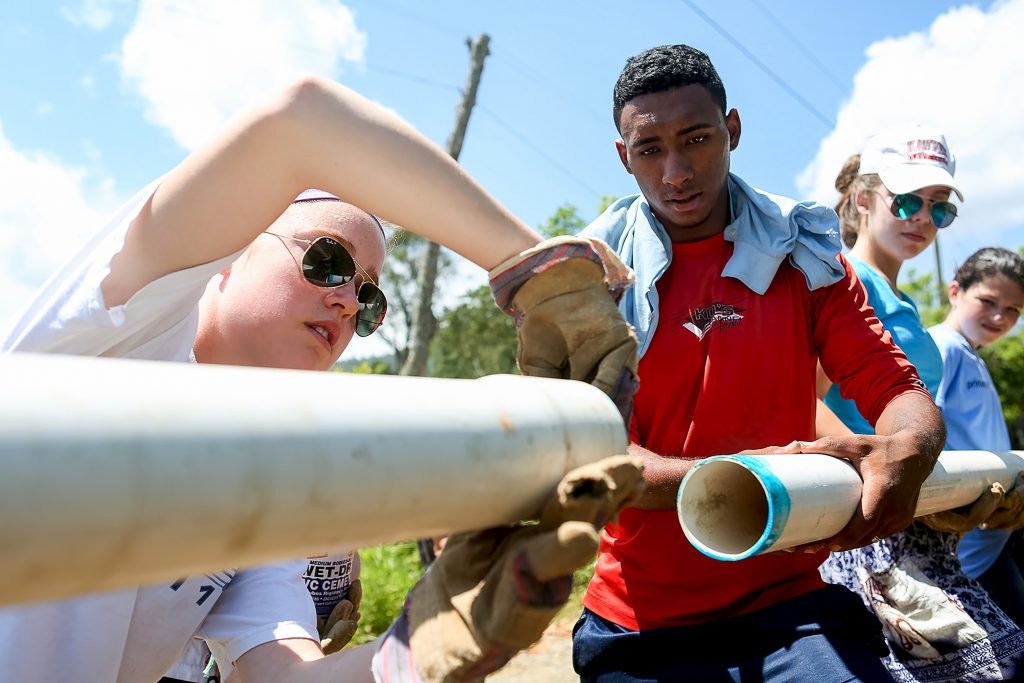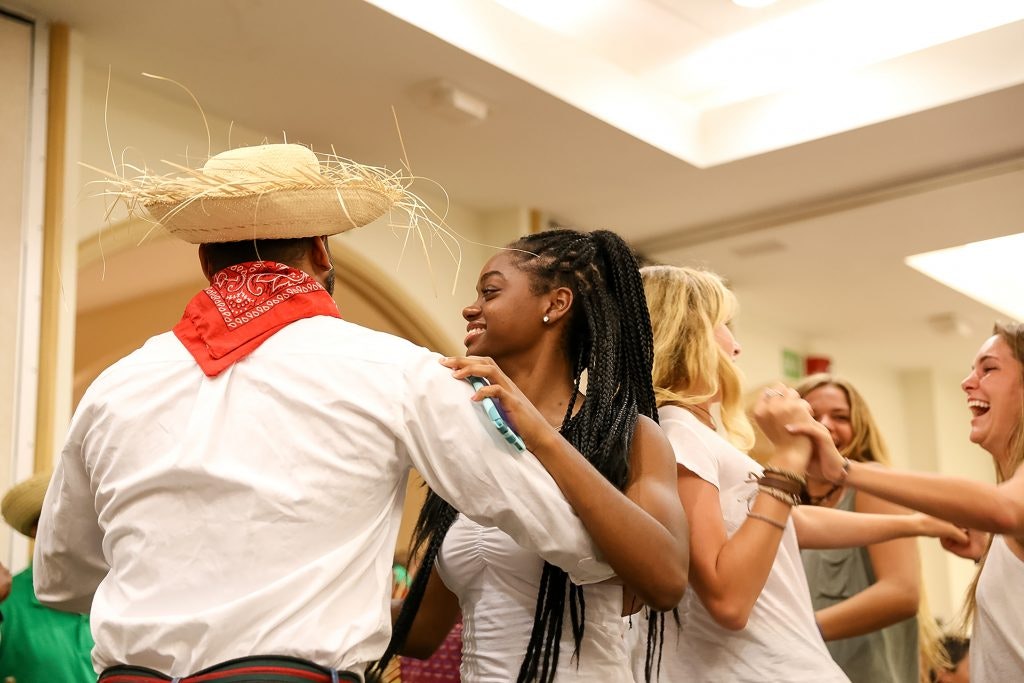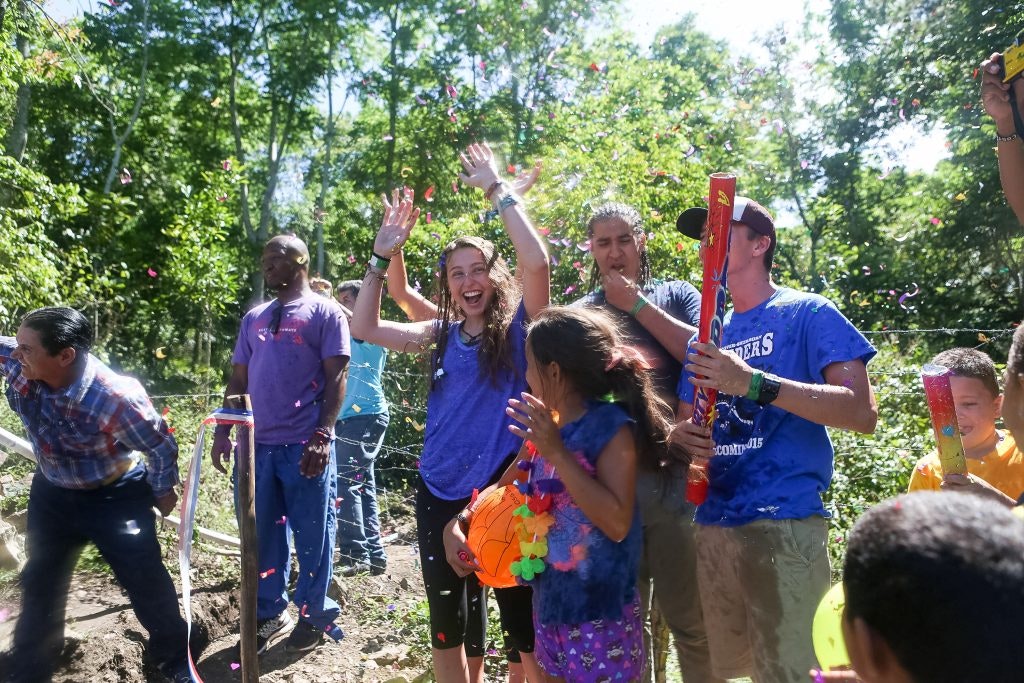Engaging with Local Residents on Meaningful Projects
Many teen trips offer the opportunity for students to engage with local residents on meaningful service projects, such as building an aqueduct for the Mountain Air and Island Living program.

A wonderful experience after a day of hard work is to hold a celebration with sancocho to eat, which is a type of Dominican stew. It’s only made better when you have the chance to eat it alongside members of the local community.
Water projects are not the only ones that inspire students. Environmental projects also make an impact. In the Marine Life and Coastal Restoration program students learn about how irresponsible tourism has damaged coral reefs and how they can help. This includes lessons about using the right sunscreen and avoiding boating in certain areas, along with hands-on projects with local residents that involve building reefs in the Caribbean Sea.
Savoring the Authentic Dominican Cuisine and Culinary Traditions
In addition to the Dominican stew sancocho, teens who visit this nation can savor authentic Dominican cuisine prepared by local chefs. Students can stop at the smoothie shop La Melaza where they can try interesting combinations of local fruits in a Dominican-style smoothie.
Other recommended dishes include los tres golpes for breakfast or the three hits, which is fried cheese, fried salami, and fried eggs. They are often served with plantains with onion sauce.
For lunch and dinner, la bandera is often served. A rice, beans, and chicken dish, its name refers to the Dominican flag and its red, white and blue colors. The red is represented by the beans. The white is the rice, and meat or poultry is the third color even if it isn’t really blue.
Residents in tourist areas also will frequently offer coffee to visitors.

Immersing in Rich Dominican Culture
Aside from food, students also can enjoy other cultural aspects, such as the merengue and bachata dances. The merengue is the Dominican Republic’s national dance. It has Spanish and African influences and is based on a repeating five-beat rhythmic pattern.
The bachata is a style of dance that originated in the Dominican Republic and is popular in many countries because of its relatively easy footwork.
The bachata includes basic steps and taps, along with some Cuban hip motion. It’s easy for students to try the dances or watch local residents who know the steps put on a show.

Rustic Pathways students try out a dance in the Dominican Republic.
In addition, teens can see colmados in the countryside. These are convenience stores that play a central role in many communities and often serve as a social gathering place.
Related reading: Everything You Need to Know About the Dominican Republic
Creating Lasting Memories in the Dominican Republic
Overall, a trip to the Dominican Republic is an amazing opportunity to introduce teens to a new country and help them make some lasting memories.
The Dominican Republic is like no other place – the atmosphere is so lively, fun and energetic. It’s a trip that can completely change teens and open their minds to so many new things.
Precautions When Traveling in Major Cities
When visiting the Dominican Republic, it’s essential to prioritize safety, especially in large cities.
Before a trip, check that you have all necessary travel documents, including a valid passport and tourist card. If you are of legal driving age and plan to drive, you can obtain an international driving permit and should familiarize yourself with local traffic laws.
Exercise caution, particularly in major cities like Santo Domingo and Punta Cana, where tourist areas can be potential theft or scam targets. Stay vigilant, especially when interacting with strangers or when it’s nighttime.
Keep personal belongings secure, utilize hotel room safes, and be cautious with expensive items like watches and electronics.
Stay Updated on Available Emergency Services
Make sure to stay updated on local laws and news, and follow any advisories regarding natural disasters or civil unrest. In case of emergencies, know how to contact local authorities, tourist police, and emergency services.
While the Dominican Republic offers beautiful beaches and popular tourist destinations, it’s essential to prioritize safety and adhere to local guidelines to ensure a memorable and enjoyable trip.
Learn more about the Dominican Republic in this beginner’s travel guide:
For more information about teen travel to the DR, visit our program page or contact our Global Program Advisors for more details. You can also view our country book on the Dominican Republic, which has more photos and information about the country.
Traveling to the Dominican Republic? Read these Dominican Republic FAQs








